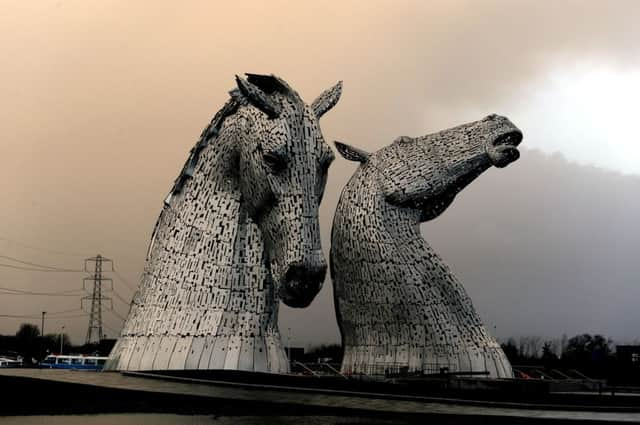Chinese give Mandarin names to Scottish landmarks


But now, The Kelpies – along with 22 other Scottish landmarks and events – have been given an even more descriptive Mandarin name voted on by the Chinese people in a bid to lure more visitors from China to Scotland.
The art installation, located off the M8 at The Helix parkland near Falkirk, has been renamed “Kai Po Ju Ma” in Mandarin, meaning “Glorious armoured giant horses”, while Loch Lomond & the Trossachs National Park has been given the moniker of “Shan Hu Huai Bao Zui Meng Xiang”, translating as “Mountain Lakes Get You Drunk on Dreams”.
Advertisement
Hide AdAdvertisement
Hide AdThe VisitBritain campaign, which aims to attract more of the lucrative, burgeoning Chinese tourist market to the UK, saw creative, “relatable” Mandarin names chosen and voted for by thousands of people across China.
The initiative, called the “Great Names” campaign, asked Chinese people to suggest names for a list of landmarks and events – and then vote on which was their favourite.
FOLLOW US
SCOTSMAN TABLET AND MOBILE APPS
In China it is usual to give names to celebrities, places and foods that offer a literal description of what Chinese people envision when thinking about them. Often the translations combine descriptions with words whose sounds suggest the object being described.
Other Scottish landmarks to be given Mandarin names include Culzean Castle, which was called “Huan Jing Xuan Ya Bao” or “Dream castle on the cliff”, and Highland Games, which was called “Qun Ying Hui”, which translates literally as “Strong-man Skirt Party”.
Glen Coe received the third highest number of votes overall in the whole campaign at 24,505, whilst The Highland Games was the most popular Scottish point of interest to name, with a total of 235 suggestions. The Scottish names are part of a 101-strong UK-wide list of high profile tourist attractions.
Denise Hill, head of international marketing at VisitScotland, said: “This campaign has thrown up some truly inspiring and engaging names for Scottish icons, with the Glenfinnan Viaduct described as ‘Highland Rainbow’ and Loch Lomond and the Trossachs National Park becoming ‘Mountain Lakes Get You Drunk on Dreams’ being particular highlights.
“The Great Names campaign has proved a fun and entertaining way for us to engage with Scotland’s Chinese market, which is growing year-on-year. These extraordinary new monikers will only serve to lend even more intrigue and romance to places throughout Scotland which in turn will lead to further increases in visits from China.
“William Shakespeare once asked: ‘What’s in a name?’ It seems the answer is a great deal.”
Advertisement
Hide AdAdvertisement
Hide AdIn 2012, 28,000 Chinese tourists visited Scotland, spending £16 million. A total of 196,000 Chinese visitors holidayed in the UK that year.
Joss Croft, marketing director at VisitBritain, said: “We want Britain to be the most attractive and welcoming destination for Chinese travellers in Europe. The naming campaign has given these Scottish locations and landmarks huge exposure across China and created an affinity with potential tourists. We hope the points of interest involved will embrace their new Mandarin name to help them compete for more high-spending tourists from the world’s biggest outbound tourism market.”
Kelpie artist Andy Scott added: “I am delighted that the Kelpies have reached out to a new audience and that they have been recognised with such an evocative and dynamic Mandarin name. It is a real accolade for me as the artist and the whole team involved in The Kelpies that they have been adopted for the Visit Britain campaign and been so well received in China.”